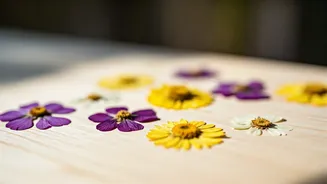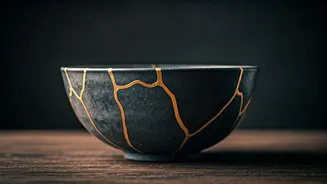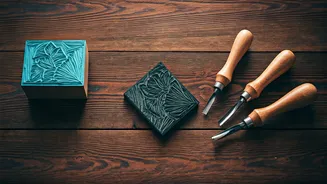What is Kirigami?
Kirigami, stemming from the Japanese words 'kiru' (to cut) and 'kami' (paper), is a paper art form closely related to origami, the art of paper folding.
Unlike origami, which primarily uses folds, kirigami incorporates cutting the paper to sculpt designs. This allows for three-dimensional shapes, detailed patterns, and complex structures that origami alone cannot achieve. It is a fantastic hobby for individuals of any age as it is easy to learn and enjoyable. Whether it's crafting simple snowflakes or elaborating on complex architectural models, Kirigami gives you creative freedom.
Essential Kirigami Tools
To begin your Kirigami journey, you don't need a lot of specialized tools, which is one of the aspects that make it so approachable. The core requirements include a sharp craft knife or precision scissors for cutting delicate shapes, ensuring clean lines and accuracy. A self-healing cutting mat is crucial to protect your work surface and extend the life of your blades. The paper itself is an important component. Consider using lightweight paper like printer paper or specialized Kirigami paper, which are easily available, and are less likely to tear during intricate cutting. A metal ruler helps achieve straight, precise cuts. If you're going for complex designs, curved blades are also a helpful addition. Finally, a pair of tweezers will help you manipulate small paper pieces and assemble your creations with precision.
Basic Cutting Techniques
The cutting process is fundamental to the art of Kirigami. It is important to hold your craft knife or scissors at a comfortable angle to see and easily control the direction of the cut. For beginners, it is advisable to start with simple straight cuts and gradually move to curves and detailed patterns. Always cut with a steady hand, applying even pressure to avoid jagged edges or tearing. Use a ruler as a guide for straight cuts, ensuring accuracy and neatness. When cutting intricate designs, slow and careful movements are important to keep the paper in good shape. Practice makes perfect: with each attempt, you will get better at cutting various shapes. Learning cutting techniques is not only about knowing how to make the right cuts, but also about becoming familiar with the properties of the paper itself.
Folding and Assembly
Once the cutting is complete, the next phase involves folding the paper to create three-dimensional structures. This is where the magic really happens, as flat paper turns into dynamic shapes. Experiment with different folds to achieve various effects, from simple mountain and valley folds to more complex accordion and fan folds. The precision of your folds is as important as your cutting, so be careful and make precise creases using a bone folder or the edge of a ruler. In many Kirigami projects, assembly is needed. Use small amounts of glue or double-sided tape to join different parts, ensuring everything stays where it is supposed to be, without leaving excessive adhesive marks. When assembling complex models, start by joining the larger parts and finish with the smaller, more delicate ones, allowing them to build each other.
Starting with Simple Projects
The best way to start is with simple projects, which offer a great introduction to the basics of Kirigami. Start with greeting cards, using basic cut-and-fold techniques to create pop-up elements. Another great choice is the creation of simple snowflakes: they allow you to practice symmetrical cutting and folding. Geometric shapes, like cubes, pyramids, or prisms, are also very good projects that will help develop your skills in 3D forms. Follow easy tutorials to build each project step by step and start with the simplest ones, and work your way up gradually as your confidence grows. These beginner projects will build your skills and prepare you to tackle more advanced designs. As you see your projects progress, your enthusiasm will grow, so don't give up.
Advanced Kirigami Ideas
As you become more comfortable with the basic techniques, consider moving to more complex and demanding projects. Architectural models are fascinating projects, allowing you to recreate famous buildings or invent your own designs. Intricate pop-up books are an opportunity to combine cutting, folding, and assembly into narrative and visual experiences. Explore free-hand designs to express your personal artistic vision. Experiment with different paper types, such as metallic, patterned, or textured, to add visual interest. Try designing your own Kirigami patterns: this involves planning the design on paper, making the cuts, and constructing the three-dimensional form. This opens up even more possibilities to express your creativity and discover new dimensions in this ancient art form.
Tips for Successful Kirigami
To achieve amazing results in Kirigami, there are several things you should keep in mind. Good lighting is critical, so work in a well-lit area to minimize eye strain and avoid cutting mistakes. When designing, consider the paper's weight and the complexity of the cuts, since heavier paper can handle more intricate cuts. Keep the tools in good condition: a sharp knife or scissors will make the cutting process much easier and cleaner. Patience is essential, especially with complicated designs: don't rush, and take your time. If you make a mistake, don't worry: you can always learn from it and try again. Enjoy the process: Kirigami is as much about relaxation and enjoyment as it is about creating beautiful art. So have fun and let your creativity flow.









